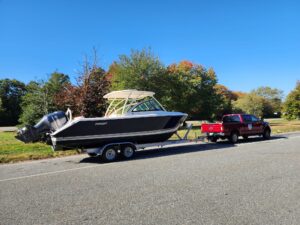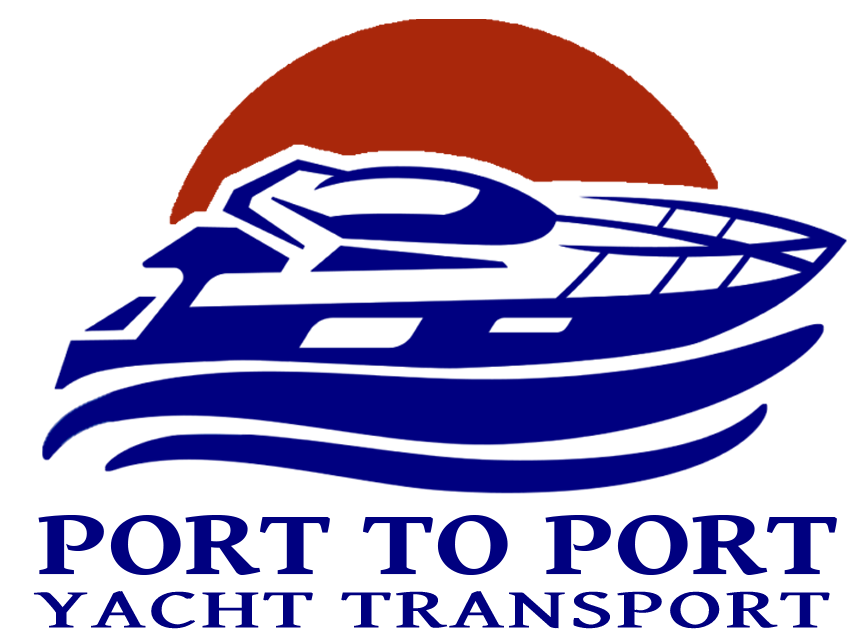Table of Contents
ToggleNavigating Gale Winds during Transport
Navigating Gale Winds during Transport, with Port to Port Yacht Transport at the helm means transporting your cherished boat across the highways and byways. We absolutely know meticulous preparation is key. But what if the weather forecast predicts strong winds, ranging from 60 to 75 miles per hour (mph), and the transport itself offers high winds during the journey? Fret not, because with the right knowledge, you can ensure a safe and successful voyage on land. Here are some quick pointers every boat owner should know about preparing their vessel for land transport in these challenging conditions:
Navigating Gale Winds During Transport
1. Prioritize Safety: Always put safety first. If the weather report signals extreme winds, consider delaying the transport until conditions improve. Your safety and the safety of others on the road are paramount. We will notify you that we have secured your boat again Gale Winds during a storm, or we are continuing on navigating gale winds during transport- Either way- you are notified.
2. Secure Loose Items: Remove or securely fasten any loose items on your boat. This includes sails, cushions, equipment, and personal belongings. Strong winds can easily turn unsecured items into potential projectiles, causing damage to your boat and posing hazards to others on the road.

N3. Stow It Away: Absolutely Essential: Navigating Gale Winds during transport we must ensure all hatches, doors, and windows are firmly closed and locked. This safeguards against wind-driven rain or water entering the vessel, potentially causing damage during transit.
4. Minimize Wind Resistance: Lower or remove antennas, radar, and any other protruding equipment that can create wind resistance, navigating gale winds during land transport may cause equipment to be destroyed or lost. Retract or securely fasten features like awnings, Bimini tops, and fishing gear. Reducing wind resistance helps maintain your boat’s stability on the trailer.
5. Rigging Check: If applicable, perform a thorough inspection of your boat’s rigging. Confirm that masts are well-secured, and all stays and shrouds are appropriately tightened. A well-prepared rigging system can withstand the forces exerted by strong winds more effectively but to be safe while navigating gale winds during transport remove or tighten down for the transport.
6. Manage Weight: Maintain fuel tanks and water tanks at least partially full. This additional weight can enhance your boat’s stability when navigating gale winds during transport and counterbalance the effects of high winds.
7. Disconnect Batteries: Prevent electrical system drainage and reduce the risk of electrical issues by disconnecting your boat’s batteries before transport.
8. Empty Water Tanks: Drain any water tanks to decrease your boat’s overall weight, particularly if your vessel has a higher profile that may be susceptible to wind-induced forces while navigating gale winds during transport.
9. Secure or Remove Lines: Ensure all lines, ropes, and cables are properly secured to prevent entanglements and safety hazards. If feasible, consider removing lines that are not essential for the transport journey.
10. Stay in Touch: Maintain open communication with your chosen boat transport company. Share any concerns you may have regarding weather conditions, and seek their advice and recommendations to ensure a safe and smooth journey on the road.
11. Insurance Coverage: Double-check your boat’s insurance coverage with your agent. Confirm that your vessel is adequately insured for land transport and any potential weather-related incidents that may arise during the journey.
In the face of powerful winds on land, meticulous preparation is your most valuable asset. By adhering to these quick pointers, you can fortify your vessel and ensure it can withstand the challenges of land transport in winds ranging from 60 to 75 mph. With safety and preparation as your guiding principles, you’ll navigate the highways and byways of boat transport with unwavering confidence. Remember, a well-prepared boat is a safe boat!
Navigating Gale Winds During Transport
Port to Port Yacht Transport prides itself on the professionalism and expertise of its CDL (Commercial Driver’s License) drivers, who are well-equipped to handle the challenges of transporting boats and yachts, even in adverse weather conditions such as gale-force winds on land.
Professionalism of CDL Drivers:
-
Extensive Experience: Port to Port’s CDL drivers boast years of experience in the industry, making them seasoned experts in the art of boat and yacht transport. With their extensive background, they have a deep understanding of the intricacies involved in safely moving vessels on the road.
-
Training and Certification: All CDL drivers at Port to Port undergo rigorous training and maintain the necessary certifications to ensure they are up-to-date with the latest safety protocols, regulations, and best practices for transporting boats and yachts.
-
Attention to Detail: Professionalism is evident in the meticulous attention to detail displayed by Port to Port’s CDL drivers. They understand that even the smallest oversight can have significant consequences when it comes to securing and transporting valuable vessels.
Here’s a quick video to guide you in preparing your boat in Navigating Gail wind during Transport.
